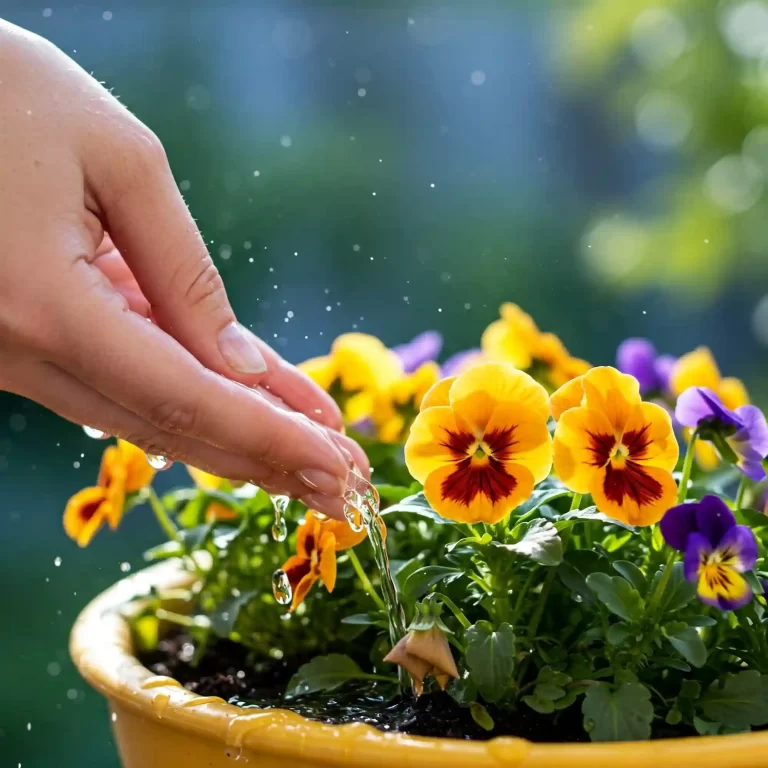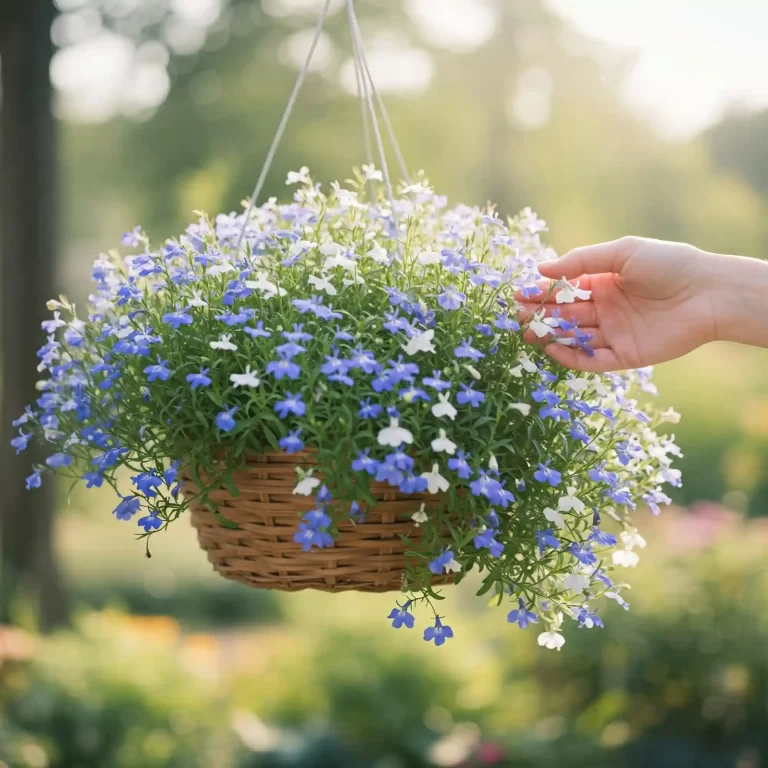Are you captivated by the vibrant hues of red and yearning to infuse your garden with a touch of natural elegance? Look no further than the enchanting Pimpernel red flower. While its delicate beauty is undeniable, cultivating this botanical gem can be a daunting task for novice gardeners. Fear not, for this comprehensive guide will equip you with the essential knowledge and practical tips to nurture your Pimpernel red flowers from seed to splendor. Uncover the secrets to selecting the perfect growing conditions, mastering propagation techniques, and providing optimal care for these captivating blooms. Let’s embark on this gardening adventure together and transform your outdoor space into a breathtaking Pimpernel paradise.
1. Understand Pimpernel Red Flowers
What are Pimpernel Red Flowers?
Pimpernel red flowers, scientifically known as Anagallis arvensis, are captivating annual plants renowned for their vibrant scarlet blooms. Often referred to as scarlet pimpernel, red chickweed, or shepherd’s weather glass, these low-growing beauties are a delightful addition to any garden. Native to Europe and western Asia, Pimpernel has spread to various regions worldwide due to its adaptability and resilience.
Botanical Name and Common Names
To accurately identify and research Pimpernel red flowers, it’s essential to understand their botanical name, Anagallis arvensis. This nomenclature aids in distinguishing them from other plant species and accessing comprehensive information about their cultivation requirements. While commonly known as Pimpernel red flowers, these plants have earned several other descriptive names, such as scarlet pimpernel, red chickweed, and shepherd’s weather glass.
Native Habitat and Growth Habits
Pimpernel red flowers thrive in open, sunny locations with well-drained soil. They are commonly found in meadows, fields, and along roadsides, demonstrating their ability to adapt to various growing conditions. As low-growing plants, they typically spread horizontally, forming attractive ground cover. Their trailing stems produce succulent leaves and striking red blossoms, creating a vibrant tapestry when planted in masses.
Pimpernel Red Flower Characteristics
Pimpernel red flowers boast a captivating allure with their vibrant scarlet petals and contrasting yellow centers. These blossoms typically open in the morning sunlight and close in the evening or during overcast conditions, earning them the nickname “shepherd’s weather glass.” The flowers are followed by small, round seed capsules containing numerous tiny seeds, ensuring the plant’s propagation.
2. Choose the Perfect Growing Location
Sunlight Requirements for Pimpernel Red Flowers
Pimpernel red flowers thrive in locations that receive ample sunlight. A minimum of six hours of direct sunlight per day is ideal for promoting robust growth and abundant blooms. While they can tolerate some shade, insufficient light may result in reduced flowering and leggy growth. Consider planting Pimpernel in areas of your garden that receive full sun exposure for optimal results.
Ideal Soil Conditions for Pimpernel Growth
These versatile plants prefer well-drained soil that is rich in organic matter. A slightly acidic to neutral soil pH is suitable for Pimpernel cultivation. Avoid heavy clay soils that retain excess moisture, as this can lead to root rot. Incorporating compost or well-rotted manure into the soil before planting will improve its fertility and drainage.
Preparing Your Garden Bed for Pimpernel Planting
Before planting Pimpernel red flowers, thoroughly prepare your garden bed. Remove any weeds or debris to prevent competition for nutrients and moisture. Loosen the soil to a depth of about 6 inches to allow for proper root development. Consider adding a layer of organic mulch to help retain moisture, suppress weeds, and regulate soil temperature.
By carefully selecting the ideal growing location and preparing the soil accordingly, you create a foundation for the successful cultivation of your Pimpernel red flowers.
3. Starting Pimpernel Red Flowers from Seed
When to Sow Pimpernel Seeds
Pimpernel red flowers can be propagated through seeds. For optimal germination, it’s recommended to start seeds indoors about six to eight weeks before the last frost in your region. This allows seedlings to establish a strong root system before transplanting outdoors. Alternatively, you can directly sow seeds in the garden after the danger of frost has passed.
Sowing Depth and Spacing for Pimpernel Seeds
Pimpernel seeds are tiny, so they only require a light covering of soil. Sow them on the surface of moist seed starting mix and gently press them into the soil. Maintain a spacing of about 6 inches between seeds to prevent overcrowding. For direct sowing, thin seedlings to a distance of 6 inches apart once they have established themselves.
Germination Conditions for Pimpernel Seeds
To encourage successful germination, provide Pimpernel seeds with warm temperatures between 65°F and 75°F (18°C and 24°C). Maintain consistent moisture levels by misting the seed starting mix regularly. Avoid overwatering, as this can lead to damping off. Typically, Pimpernel seeds germinate within two to three weeks under optimal conditions.
Transplanting Pimpernel Seedlings
Once Pimpernel seedlings have developed a few true leaves, they are ready to be transplanted outdoors. Choose a sunny location with well-drained soil and carefully transfer the seedlings to the prepared garden bed. Handle the seedlings gently to avoid damaging their delicate roots. Space the transplants about 6 inches apart to allow for adequate growth.
By following these guidelines for starting Pimpernel red flowers from seed, you can successfully cultivate a vibrant display of these charming blooms.
4. Propagating Pimpernel Red Flowers
While starting Pimpernel red flowers from seed is a common method, propagation through cuttings or division is also possible. These techniques allow you to increase your Pimpernel population and preserve desired traits.
How to Propagate Pimpernel Plants
- Cuttings: Take stem cuttings of about 4-6 inches in length from healthy Pimpernel plants. Remove the lower leaves and dip the cut end in rooting hormone for faster root development. Plant the cuttings in a pot filled with moist potting mix and place it in a warm, shaded location. Keep the soil consistently moist and mist the cuttings regularly to maintain humidity. Once the cuttings have developed roots, they can be transplanted outdoors.
- Division: Pimpernel plants can be divided in spring or autumn. Carefully dig up the established plant and gently separate the root ball into smaller sections, each with healthy roots and shoots. Replant the divisions in prepared garden beds, ensuring adequate spacing between them.
Best Time for Pimpernel Propagation
The ideal time for propagating Pimpernel red flowers is during the growing season, typically from spring to early summer. This allows the new plants ample time to establish themselves before the onset of winter.
Care for Pimpernel Cuttings or Divisions
Provide consistent care for your newly propagated Pimpernel plants. Water them regularly to maintain moist soil conditions, but avoid overwatering. Fertilize with a balanced liquid fertilizer to promote growth. Protect young plants from extreme weather conditions and gradually acclimate them to outdoor conditions if they were propagated indoors.
By mastering propagation techniques, you can expand your Pimpernel collection and share these delightful plants with fellow gardening enthusiasts.
5. Planting Pimpernel Red Flowers
Spacing Pimpernel Plants for Optimal Growth
Proper spacing is essential for Pimpernel red flowers to thrive and reach their full potential. When planting seedlings or transplants, maintain a distance of approximately 6 inches between plants to allow for adequate air circulation and prevent overcrowding. This spacing promotes healthy growth, abundant flowering, and minimizes the risk of diseases.
Planting Depth for Pimpernel Seedlings or Transplants
When planting Pimpernel seedlings or transplants, ensure that the root ball is covered with soil but not buried too deeply. Plant them at the same depth as they were growing in their original containers. Gently firm the soil around the base of the plants to establish good contact with the ground.
Aftercare for Newly Planted Pimpernel
Provide newly planted Pimpernel red flowers with consistent moisture to help them establish a strong root system. Water regularly, especially during dry periods, but avoid overwatering. Mulching around the plants can help retain soil moisture and suppress weeds. Monitor for pests and diseases and take appropriate measures to protect your Pimpernel plants.
By following these planting guidelines, you set the stage for a thriving Pimpernel red flower display in your garden.
6. Caring for Pimpernel Red Flowers
Consistent care is essential for maintaining the health and vitality of your Pimpernel red flowers. By providing adequate water, nutrients, and protection, you can encourage abundant blooms and prolong the plant’s lifespan.
Watering Needs for Pimpernel Plants
Pimpernel red flowers prefer moist soil conditions but dislike waterlogging. Aim to keep the soil consistently moist, especially during dry periods. However, avoid overwatering, as this can lead to root rot. Deep watering less frequently is generally preferable to shallow, frequent watering. Monitor soil moisture levels and adjust watering accordingly.
Fertilizing Pimpernel Red Flowers
While Pimpernel red flowers are relatively low-maintenance, providing them with additional nutrients can enhance their growth and flowering. Apply a balanced liquid fertilizer diluted to half strength once a month during the growing season. Avoid over-fertilization, as this can lead to excessive foliage growth at the expense of flowers.
Mulching Around Pimpernel Plants
Mulching around Pimpernel plants offers several benefits. It helps retain soil moisture, suppresses weed growth, and regulates soil temperature. Apply a layer of organic mulch, such as compost or wood chips, around the base of the plants, avoiding direct contact with the stems.
Deadheading Pimpernel Flowers for Continuous Bloom
Regularly removing spent flowers, a process known as deadheading, encourages continuous blooming. By removing faded blossoms, you prevent the plant from expending energy on seed production and redirect it towards producing new flowers. Deadheading also enhances the overall appearance of your Pimpernel plants.
By following these care practices, you can ensure the optimal health and beauty of your Pimpernel red flower garden.
7. Common Pimpernel Red Flower Problems and Solutions
While Pimpernel red flowers are generally resilient, they can encounter certain challenges. By understanding common problems and implementing effective solutions, you can protect your plants and maintain their health.
Pests that Affect Pimpernel Plants
Several pests can infest Pimpernel plants, including aphids, slugs, and snails. Aphids are small, sap-sucking insects that can weaken plants. Slugs and snails can devour leaves and flowers, causing significant damage. To deter these pests, consider using organic methods such as handpicking, insecticidal soap, or diatomaceous earth. For severe infestations, consult a local garden center for appropriate pest control options.
Diseases that Can Harm Pimpernel
Pimpernel red flowers can be susceptible to diseases like damping-off and powdery mildew. Damping-off is a fungal disease that affects seedlings and causes them to rot at the soil line. Proper drainage and avoiding overwatering can help prevent damping-off. Powdery mildew is a fungal disease that creates a white powdery coating on leaves. Good air circulation, proper spacing, and avoiding overhead watering can help reduce the risk of powdery mildew.
Treating Pimpernel Plant Problems
For mild infestations or diseases, organic treatments often suffice. Neem oil, insecticidal soap, and horticultural oil can effectively control pests. For fungal diseases, fungicides with active ingredients like copper or sulfur can be applied according to label instructions. In severe cases, consulting with a local gardening expert may be necessary to determine the best course of action.
By proactively addressing potential problems, you can protect your Pimpernel red flowers and enjoy a healthy, vibrant garden.
8. Pimpernel Red Flowers in Your Garden Design
Pimpernel red flowers offer versatility and charm when incorporated into various garden designs. Their low-growing habit and vibrant blooms make them a valuable asset for creating visually appealing and harmonious outdoor spaces.
Using Pimpernel Red Flowers as Ground Cover
One of the most popular uses for Pimpernel red flowers is as ground cover. Their spreading growth habit and ability to tolerate foot traffic make them ideal for filling in gaps between larger plants or covering bare patches in the garden. The vibrant red blooms create a stunning carpet of color, enhancing the overall aesthetic appeal.
Combining Pimpernel with Other Plants (Companion Planting)
Pimpernel red flowers can be effectively combined with other plants to create visually striking and harmonious arrangements. They complement a wide range of colors and textures, adding a touch of brilliance to your garden. Consider pairing Pimpernel with blue or purple flowers for a captivating contrast. They also harmonize well with white and yellow blooms, creating a cheerful and inviting atmosphere.
Pimpernel in Containers or Hanging Baskets
Pimpernel red flowers can be successfully grown in containers or hanging baskets, adding a splash of color to patios, balconies, or windowsills. Choose containers with adequate drainage and fill them with a well-draining potting mix. Pimpernel can be combined with other trailing plants or used as a standalone display.
By incorporating Pimpernel red flowers into your garden design, you can create a captivating and eye-catching landscape that will delight both you and your visitors.
9. Harvesting Pimpernel Red Flowers
While Pimpernel red flowers are primarily grown for their ornamental value, their blooms can also be harvested for decorative purposes. By understanding the proper harvesting techniques, you can enjoy the beauty of Pimpernel indoors or create stunning floral arrangements.
When to Harvest Pimpernel Flowers
The ideal time to harvest Pimpernel red flowers is in the morning when they are fully open and at their peak freshness. Choose flowers that are vibrant in color and free from blemishes or pests.
How to Harvest Pimpernel Flowers for Bouquets or Drying
To harvest Pimpernel flowers for bouquets, cut the stems at an angle using clean, sharp scissors. Place the harvested flowers in a vase filled with fresh water to extend their lifespan. For drying, create small bundles of Pimpernel stems and hang them upside down in a warm, dry, and well-ventilated area. Once the flowers are completely dry, store them in airtight containers or sealed bags.
Preserving Pimpernel Flowers for Later Use
Preserved Pimpernel flowers can be used in various creative projects. To preserve the flowers, immerse them in a solution of one part glycerin and two parts hot water. Allow the flowers to soak for several weeks until the glycerin has been absorbed. Remove the flowers from the solution and allow them to dry completely. Once dry, the preserved Pimpernel flowers can be used in crafts, floral arrangements, or decorative accents.
By carefully harvesting and preserving Pimpernel red flowers, you can enjoy their beauty throughout the year.
10. Enjoying Your Pimpernel Red Flower Garden
Tips for Maintaining Pimpernel Plants Year-Round
While Pimpernel red flowers are annuals, they can self-seed readily, ensuring a continuous supply of plants in your garden. However, if you prefer to control their spread, remove spent flowers before they form seed pods. To encourage self-seeding, allow some flowers to mature and disperse their seeds naturally.
Propagating Pimpernel to Share with Others
Sharing the beauty of Pimpernel red flowers with friends and neighbors is a rewarding experience. Propagate additional plants through cuttings or division and share them with fellow gardening enthusiasts. By spreading the joy of Pimpernel, you contribute to the vibrant diversity of your community’s gardens.
Inspiring Others to Grow Pimpernel Red Flowers
Share your knowledge and passion for Pimpernel red flowers with others through gardening clubs, online forums, or social media. Encourage beginners to embark on their Pimpernel growing journey by providing helpful tips and resources. By inspiring others, you create a network of Pimpernel enthusiasts and contribute to the preservation of this delightful plant.
By following these tips and sharing your love for Pimpernel red flowers, you can create a lasting legacy of beauty and inspiration in your garden and beyond.
Conclusion
Growing Pimpernel red flowers is a rewarding experience that brings vibrant color and natural charm to your garden. By understanding their specific needs, providing proper care, and incorporating them into your garden design, you can create a stunning and sustainable floral display. Embrace the beauty of Pimpernel red flowers and let their captivating presence transform your outdoor space into a haven of natural elegance.







